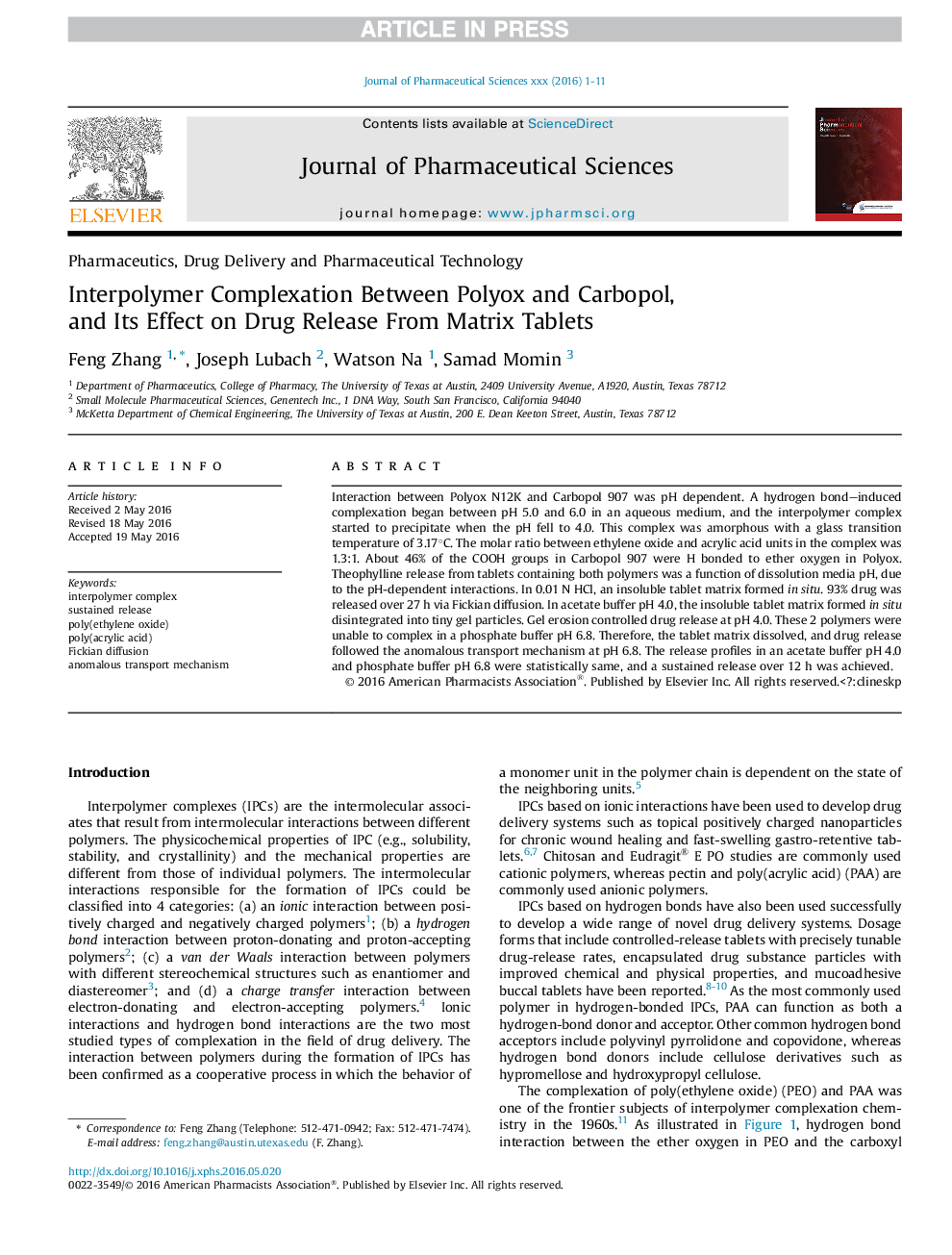| Article ID | Journal | Published Year | Pages | File Type |
|---|---|---|---|---|
| 2484330 | Journal of Pharmaceutical Sciences | 2016 | 11 Pages |
Abstract
Interaction between Polyox N12K and Carbopol 907 was pH dependent. A hydrogen bond-induced complexation began between pH 5.0 and 6.0 in an aqueous medium, and the interpolymer complex started to precipitate when the pH fell to 4.0. This complex was amorphous with a glass transition temperature of 3.17°C. The molar ratio between ethylene oxide and acrylic acid units in the complex was 1.3:1. About 46% of the COOH groups in Carbopol 907 were H bonded to ether oxygen in Polyox. Theophylline release from tablets containing both polymers was a function of dissolution media pH, due to the pH-dependent interactions. In 0.01 N HCl, an insoluble tablet matrix formed in situ. 93% drug was released over 27 h via Fickian diffusion. In acetate buffer pH 4.0, the insoluble tablet matrix formed in situ disintegrated into tiny gel particles. Gel erosion controlled drug release at pH 4.0. These 2 polymers were unable to complex in a phosphate buffer pH 6.8. Therefore, the tablet matrix dissolved, and drug release followed the anomalous transport mechanism at pH 6.8. The release profiles in an acetate buffer pH 4.0 and phosphate buffer pH 6.8 were statistically same, and a sustained release over 12 h was achieved.
Keywords
Related Topics
Health Sciences
Pharmacology, Toxicology and Pharmaceutical Science
Drug Discovery
Authors
Feng Zhang, Joseph Lubach, Watson Na, Samad Momin,
